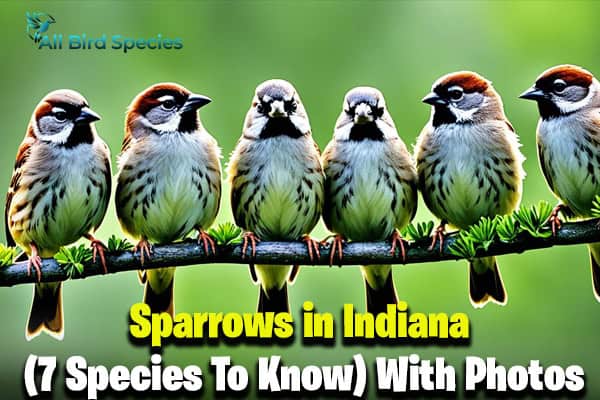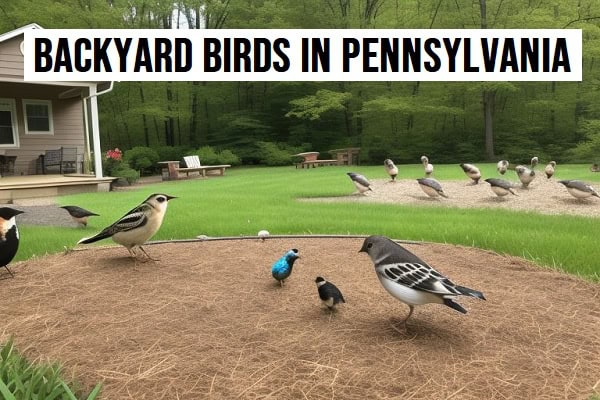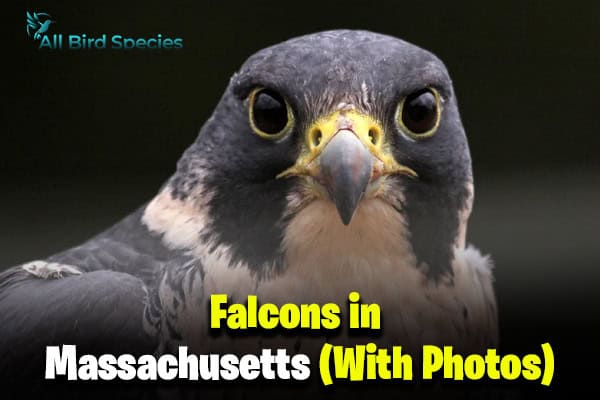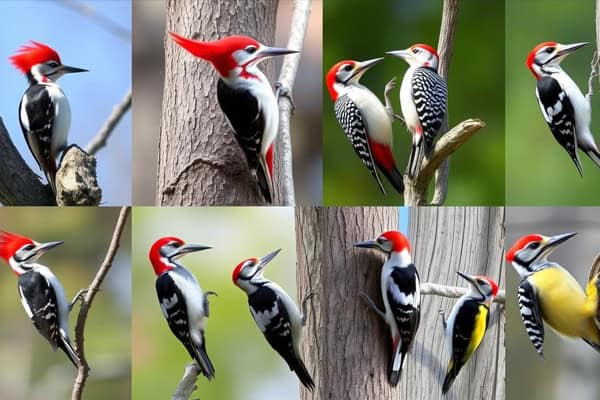Sparrows in Indiana (7 Species To Know) With Photos
Have you ever thought about why sparrows are important in Indiana? This guide will show you the beauty of Indiana’s sparrows, from the House Sparrow to the rare Lincoln’s Sparrow. You’ll see beautiful photos and learn how to tell these birds apart. You’ll also see how they help our environment and adapt to different places.
Let’s go birdwatching and learn more about Indiana’s sparrows. We’ll look at their behaviors, what they eat, and why they’re important. By doing this, you’ll love these birds even more and understand the different types that live near you.
Understanding the Importance of Sparrows
Sparrows are key to Indiana’s ecosystems. They play many roles, like spreading seeds and controlling insects. Watching them in your backyard shows how they help nature stay balanced.
Sparrows do more than just spread seeds. They are food for bigger birds and mammals, which is vital for the food web. By eating insects, they keep plants and farms healthy. This shows how important they are for keeping nature diverse.
Birdwatching brings people together and helps us love nature more. Seeing sparrows makes us realize why we need to protect wildlife. This pushes us to help sparrows and keep their homes safe. Saving sparrows helps Indiana’s environment stay healthy.
Common Features of Sparrows
Sparrows are fascinating birds known for their diverse physical traits and adaptable diets. They have unique body features and ways of eating. Let’s explore what makes sparrows special and look at their food sources and how they eat.
Physical Characteristics
The physical traits of sparrows help us tell them apart. They are small, ranging from 4 to 8 inches long. Some key sparrow identification marks include:
- Muted plumage for hiding, often in browns and grays
- Short, conical bills for eating seeds
- Tail length varies by species, helping with identification
- Distinctive markings on the head or breast that differ among species
Diet and Feeding Habits
The sparrow diet changes with the seasons and where they live. They eat seeds, grains, and small insects. Sparrows use different ways to find food:
- Ground foraging by scratching the soil for seeds
- Prowling in grasses or shrubs for insects
- Perching on branches to look for food
In cities, sparrows use human-provided food sources. Their feeding behaviors show how they adapt and survive in different places.
| Species | Size (inches) | Common Diet | Feeding Behavior |
|---|---|---|---|
| House Sparrow | 6.3 | Seeds, insects | Foraging, perching |
| Song Sparrow | 6.5 | Seeds, berries | Ground foraging |
| Swamp Sparrow | 5.5 | Seeds, insects | Ground foraging, prowling |
Sparrows in Indiana: Habitats and Behavior
Learning about sparrow habitats in Indiana can make you appreciate these birds more. Sparrows live in many places, from cities to fields and wetlands. Each type likes different places to live.
House sparrows often live in cities and parks. Swamp sparrows like dense marshes. Song sparrows prefer wooded areas for safety and food.
Sparrow’s behavior is very interesting. They build nests in grasses or shrubs. They also live together and forage in groups. This shows how well they adapt to different places.
Watching sparrows helps us learn about their lives and how they work together. This makes us understand their importance in Indiana’s nature.
Identifying Sparrows by Sound
Listening to birds is key to spotting sparrows in Indiana. Learning about sparrow songs and bird vocalizations makes birdwatching more fun. Each sparrow has its own song and call, making them easy to recognize by sound.
Here are some tips to help you identify sparrows by calls:
- Look for patterns in their songs; many have distinct patterns.
- Notice the pitch and tone; different species sound different.
- Watch for what the songs mean; they can signal mating, defending territory, or warning calls.
Knowing these sounds is important. Sparrows use sound to talk to each other, especially when looking for a mate. Spotting different sparrow species helps you understand their lives better. It also deepens your connection with nature.
Sparrow in other Regions:
Top 7 Species of Sparrows That Live in Indiana!
Indiana is home to many sparrow species, each with its own look, home, and sounds. This guide helps you spot different sparrows in Indiana. You’ll learn about their looks, where they live, and what sounds they make.
1. Song Sparrow
The Song Sparrow is known for its beautiful song and brown look. It lives in wetlands, shrubs, and grasslands. They eat seeds and bugs and can live up to 3 years.

2. House Sparrow
The House Sparrow does well in cities and suburbs. It has a big body and short tail, with gray and black on its back. They eat seeds and human food and can live 3 to 5 years.

3. Swamp Sparrow
The Swamp Sparrow lives in wetlands and marshes. It has a rusty crown and pale throat. They eat seeds and bugs and can live up to 6 years.

4. Dark-eyed Junco
The Dark-eyed Junco has a gray body and white belly. It likes forests and open areas. They eat seeds, especially in winter, and can live 3 years or more.
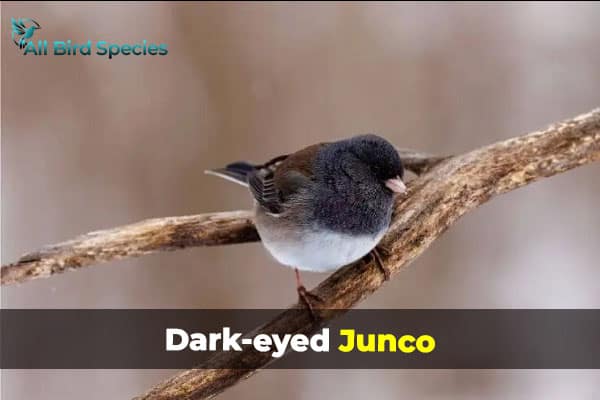
5. White-throated Sparrow
The White-throated Sparrow has a white throat and yellow face. It lives in forests and eats seeds, fruits, and bugs. They can live 2 to 5 years.
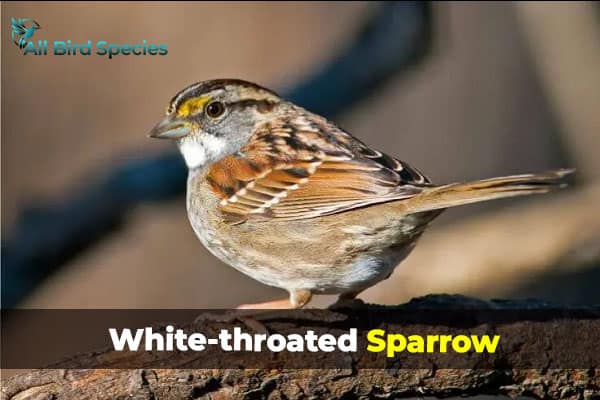
6. American Tree Sparrow
The American Tree Sparrow has a rusty cap and special bill. It likes open fields and shrubs. They eat seeds and bugs and live for about 2 years.
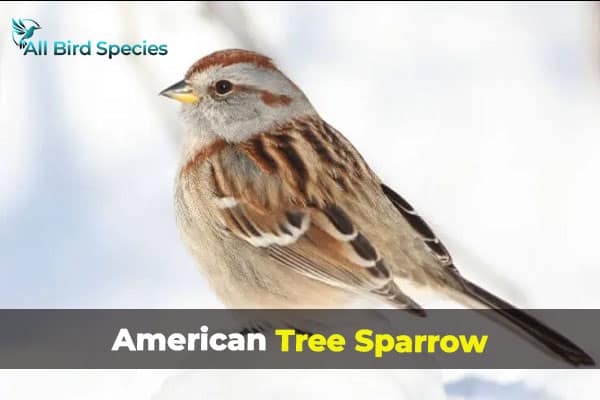
7. Chipping Sparrow
The Chipping Sparrow is small and has a bright cap. It lives in gardens, parks, and woods. They eat grass seeds and bugs and can live up to 3 years.
| Species Name | Habitat | Diet | Lifespan (Years) |
|---|---|---|---|
| Song Sparrow | Wetlands, shrublands, grasslands | Seeds, insects | Up to 3 |
| House Sparrow | Urban, suburban | Seeds, human scraps | 3-5 |
| Swamp Sparrow | Wetlands, marshes | Seeds, insects | Up to 6 |
| Dark-eyed Junco | Forests, open areas | Seeds | Up to 3 |
| White-throated Sparrow | Forests, brushy areas | Seeds, fruits, insects | 2-5 |
| American Tree Sparrow | Open fields, shrubby regions | Seeds, small insects | About 2 |
| Chipping Sparrow | Gardens, parks, open woods | Grass seeds, insects | Up to 3 |
This guide shows you some common sparrows in Indiana. It’s a great tool for bird lovers. It helps you enjoy the many birds Indiana has.
When to Spot Sparrows in Indiana
Birdwatchers look for the best time to see sparrows in Indiana. Knowing when sparrows are most active can make your birdwatching better. Different species move and behave differently with the seasons.
In spring, sparrows come back from their winter homes. This is a great time to see many species, from late March to early May. The Indiana birdwatching calendar is full of life during these months.
Summer is quieter for birdwatching as many birds nest. But, from mid-September to late October, migration brings sparrows back. This makes autumn another great time for birdwatching.
Winter brings unique species to Indiana. From late November to February, look for American Tree Sparrow and Dark-eyed Junco. Check the Indiana birdwatching calendar for special events to make your experience better.
How to Attract Sparrows to Your Backyard
Make your backyard a haven for sparrows to boost your birdwatching fun. You can draw these lovely birds by offering food and a cozy spot. Start with the best feeders and food for great results.
Here are some tips to attract sparrows:
- Select the Right Feeders: Pick feeders that let sparrows feed easily. Tube feeders with small perches and open platform feeders are great for feeding sparrows.
- Use the Right Seeds: Sparrows love sunflower seeds, millet, and cracked corn. A mix of these will help you attract sparrows.
- Create a Habitat: Sparrows do well in diverse places. Add native shrubs, flowers, and grasses for them to hide, forage, and nest.
Keep your feeders clean and filled often to make sparrows come back. Be patient. Watching birds in your backyard birdwatching can lead to fun meetings with sparrows.
Follow these easy steps to make your backyard a lively spot for sparrows. Watch their fun actions as you help them by feeding sparrows thoughtfully.
| Tip | Description |
|---|---|
| Select the Right Feeders | Use feeders that cater to sparrows, promoting easy access and comfort. |
| Use the Right Seeds | Offer a variety such as sunflower seeds, millet, and cracked corn. |
| Create a Habitat | Incorporate native plants to provide cover, food, and nesting sites. |
Conservation Efforts for Sparrows in Indiana
Sparrow conservation in Indiana is key for our ecosystems’ health. Groups and volunteers work to save sparrow homes like wetlands, grasslands, and cities. Protecting these places helps sparrows thrive for years to come.
Teaching people about sparrows is very important. We use education to show how sparrows help our world. This teaches people to make gardens for birds and use fewer pesticides, helping sparrows a lot.
- Make gardens with native plants that sparrows like.
- Put up birdhouses for local sparrow kinds.
- Join projects where people collect data on sparrows.
Working together is key for saving sparrows. Schools and local groups can hold events to teach about sparrow homes. This makes people feel they need to protect these birds.
| Conservation Efforts | Description | Impact on Sparrows |
|---|---|---|
| Habitat Restoration | Replanting native plants and removing bad ones. | More places to nest and find food. |
| Public Education | Workshops and talks on saving birds. | Makes people aware and gets them involved. |
| Citizen Science | People in the area track bird numbers and health. | Shows changes in sparrow numbers and health. |
Check Our Previous Articles:
| Woodpeckers of Indiana |
| Sparrows in Georgia |
| Swallow-Tailed Kite Identification |
| Hawks in Arizona |
| Crows Found in Florida |
Conclusion
We’ve looked at sparrows in Indiana and their important roles in our world. These birds are not just cute; they’re key to our ecosystems. By watching birds, you connect more with nature and learn about their lives.
Start by watching sparrows in your yard or a park. You might see the Song Sparrow or the House Sparrow. Each one adds to Indiana’s wildlife. Helping conservation means more people can enjoy sparrows in the future.
When you go birdwatching, take time to enjoy these birds. Helping conservation makes your experience better and brings people together. Learning about and protecting Indiana’s sparrows will deepen your love for nature.

